Rising interest rates put a spotlight on cash management for construction

The ubiquitous iPhone was first released 16 years ago and has since gone through 38 model upgrades. Until recently, 16 years ago also marked the last time the federal funds rate surpassed 5%—highlighting how interest rates have mostly stayed unchanged compared to a rapidly changing world. The recent rate hikes should also serve as a realization that the days of cheap money are likely a thing of the past.
For businesses, the Federal Reserve’s aggressive rate hike plan, in general, has been a catalyst for organizational change and a focus on cash management. For construction contractors, rising interest rates pose a specific threat because organizational performance is profoundly affected by management of the cash conversion cycle.
The importance of timely billing and capturing allowable costs
Construction projects often involve progress payments from customers. The contractor will submit invoices or payment requests at regular intervals based on specific milestones or stages of the project. The customer will review the payment request and may have 60 to 90 days from acceptance to pay the contractor for the services performed.
Retainage, a form of security for the client to ensure that the contractor fulfills all contractual obligations, is commonly withheld until the completion of specific milestones or the project itself. With retainage percentages typically ranging from 5% to 10% of the total billable amount, and time to receipt of these payments ranging from upwards of six months to a couple of years, this withheld money is essential to a contractor’s cash flow management and requires review.
Matching cash inflows against outflows can pose a challenge. Submitting the first billing (minus the 5%¬-10% retainage) to a customer 60 to 90 days after the start of a project may mean that a contractor incurs significant costs—including for mobilization, labor, material, and even certain vendor or subcontractor products or services—before receiving any funds. Then the contractor continually tries to catch up on cash receipts versus outflows for the remainder of the project.
For a contractor in a tight cash position, this differential in cash inflows versus outflows may necessitate using a line of credit to finance business operations.
As interest rates have risen, so too has the impact of using financing vehicles to fund operations. To put this into perspective, a contractor with a $5 million draw on a line of credit to finance operations has likely seen expenses rise over $20,000 per month from 2021 to today, just from higher interest rates. These amounts can significantly diminish the profitability and success of an organization and should be considered throughout the entire construction process, from formulation of the bid and estimate to receipt of the final payment from the customer.
Strategies to reduce liquidity risk
In response to one of the fastest interest rate hike campaigns ever, contractors may want to consider these cash management techniques to help mitigate liquidity risk:
- Develop a standardized workflow for cost capture (including a purchase order process) to facilitate a timely and accurate billing process.
- Ensure timely billing of customers and, where possible, bill ahead of anticipated costs. The balance sheet item “billings in excess of costs and estimated earnings,” though a liability, should not be viewed negatively, as it refers to a positive cash flow timing difference that ultimately means you are likely to obtain your cash faster and therefore avoid using third-party financing, which typically comes with interest.
- Develop a receivables collection strategy to promote faster cash collections, and limit outstanding receivables by requiring accounting and finance teams to follow up with late-paying customers to settle their overdue invoices.
- Evaluate customer terms. Try to work with customers to promote shorter collection periods by changing collection terms using quick-pay discounts (if financially beneficial), automating the collection process and even negotiating retainage terms.
- Evaluate vendor terms. Work with vendors to determine if you can get discounts on volume, product and payment timeliness. Stretch vendor payments to invoice term deadlines to help promote longer cash cycles.
Measurement is the first step to improvement
In addition to implementing cash management strategies, contractors should consider incorporating applicable cash conversion cycle metrics into their reporting capabilities. To keep track of the company’s cash position at any given time, frequently monitor accounts receivable/payable turnover, cash flow forecast accuracy, cash burn rates, cash coverage ratios and days cash on hand, among other liquidity measures.
Establishing metrics requires leveraging data from various sources, including a company’s enterprise resource planning system, bank accounts and project forecasting tools. While most accounting and finance teams understand metrics and reporting needs, data integration and predictive modeling require specialized skills. A professional services provider can help evaluate a company’s technology capabilities for accessing data and work with contractors to customize dashboards and analytical reports.
Takeaway
As inflation and expectations for a higher interest rate environment persist, contractors should continue to prioritize cash management techniques to help ensure steady cash flows and the long-term success of their organizations.
This article was written by Nick Grandy and originally appeared on 2023-06-23. Reprinted with permission from RSM US LLP.
© 2024 RSM US LLP. All rights reserved. https://rsmus.com/insights/industries/real-estate/rising-interest-rates-put-a-spotlight-on-cash-management-for-con.html
RSM US LLP is a limited liability partnership and the U.S. member firm of RSM International, a global network of independent assurance, tax and consulting firms. The member firms of RSM International collaborate to provide services to global clients, but are separate and distinct legal entities that cannot obligate each other. Each member firm is responsible only for its own acts and omissions, and not those of any other party. Visit rsmus.com/about for more information regarding RSM US LLP and RSM International.



